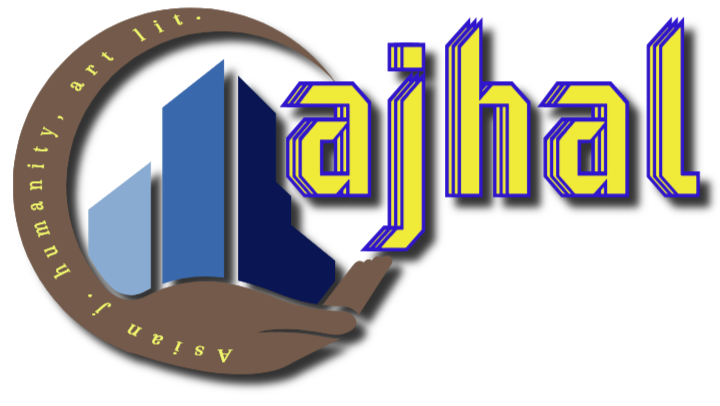Cyber Sentinel Chronicles: Navigating Ethical Hacking's Role in Fortifying Digital Security
DOI:
https://doi.org/10.18034/ajhal.v7i2.712Keywords:
Penetration Testing, Security Weaknesses, Cyber Sentinel, White Hat Hacking, Cybersecurity, Ethical HackingAbstract
It is impossible to stress how vitally important cybersecurity is in our day and age, characterized by the predominance of digital technologies. The concept of ethical hacking, sometimes known as "white hat" hacking, has recently emerged as an essential technique for protecting digital assets. Ethical hackers are at the forefront of cybersecurity because they use their skills to expose security flaws, put defenses to the test, and safeguard networks from harmful cyberattacks. Their operations are carried out honestly and within the law, primarily emphasizing anticipatorily locating and addressing vulnerabilities in the security system. We delve into the ever-evolving world of ethical hacking and shed light on the crucial part cyber sentinels play in preserving the digital landscape. It demonstrates ethical hackers' methods to find hazards and take preventative measures against them. This article discusses the importance of ethical hacking in strengthening cybersecurity, enhancing privacy, and maintaining the integrity of digital systems and digs deeply into ethical hackers' processes. Uncovering the practices and principles of these cyber sentinels highlights the indispensable role they play in ensuring a secure and resilient online environment.
Downloads
References
Baddam, P. R. (2017). Pushing the Boundaries: Advanced Game Development in Unity. International Journal of Reciprocal Symmetry and Theoretical Physics, 4, 29-37. https://upright.pub/index.php/ijrstp/article/view/109
Baddam, P. R., & Kaluvakuri, S. (2016). The Power and Legacy of C Programming: A Deep Dive into the Language. Technology & Management Review, 1, 1-13. https://upright.pub/index.php/tmr/article/view/107
Baddam, P. R., Vadiyala, V. R., & Thaduri, U. R. (2018). Unraveling Java’s Prowess and Adaptable Architecture in Modern Software Development. Global Disclosure of Economics and Business, 7(2), 97-108. https://doi.org/10.18034/gdeb.v7i2.710 DOI: https://doi.org/10.18034/gdeb.v7i2.710
Ballamudi, V. K. R. (2016). Utilization of Machine Learning in a Responsible Manner in the Healthcare Sector. Malaysian Journal of Medical and Biological Research, 3(2), 117-122. https://mjmbr.my/index.php/mjmbr/article/view/677
Ballamudi, V. K. R., & Desamsetti, H. (2017). Security and Privacy in Cloud Computing: Challenges and Opportunities. American Journal of Trade and Policy, 4(3), 129–136. https://doi.org/10.18034/ajtp.v4i3.667 DOI: https://doi.org/10.18034/ajtp.v4i3.667
Dekkati, S., & Thaduri, U. R. (2017). Innovative Method for the Prediction of Software Defects Based on Class Imbalance Datasets. Technology & Management Review, 2, 1–5. https://upright.pub/index.php/tmr/article/view/78
Dekkati, S., Thaduri, U. R., & Lal, K. (2016). Business Value of Digitization: Curse or Blessing?. Global Disclosure of Economics and Business, 5(2), 133-138. https://doi.org/10.18034/gdeb.v5i2.702 DOI: https://doi.org/10.18034/gdeb.v5i2.702
Deming, C., Baddam, P. R., & Vadiyala, V. R. (2018). Unlocking PHP’s Potential: An All-Inclusive Approach to Server-Side Scripting. Engineering International, 6(2), 169–186. https://doi.org/10.18034/ei.v6i2.683 DOI: https://doi.org/10.18034/ei.v6i2.683
Fadziso, T., Vadiyala, V. R., & Baddam, P. R. (2019). Advanced Java Wizardry: Delving into Cutting-Edge Concepts for Scalable and Secure Coding. Engineering International, 7(2), 127–146. https://doi.org/10.18034/ei.v7i2.684 DOI: https://doi.org/10.18034/ei.v7i2.684
Hollin, G. (2017). Failing, Hacking, Passing: Autism, Entanglement, and the Ethics of Transformation. BioSocieties, 12(4), 611-633. https://doi.org/10.1057/s41292-017-0054-3 DOI: https://doi.org/10.1057/s41292-017-0054-3
Ienca, M., Haselager, P. (2016). Hacking the Brain: Brain-Computer Interfacing Technology and the Ethics of Neurosecurity. Ethics and Information Technology, 18(2), 117-129. https://doi.org/10.1007/s10676-016-9398-9 DOI: https://doi.org/10.1007/s10676-016-9398-9
Kaluvakuri, S., & Amin, R. (2018). From Paper Trails to Digital Success: The Evolution of E-Accounting. Asian Accounting and Auditing Advancement, 9(1), 73–88. https://4ajournal.com/article/view/82
Kaluvakuri, S., & Lal, K. (2017). Networking Alchemy: Demystifying the Magic behind Seamless Digital Connectivity. International Journal of Reciprocal Symmetry and Theoretical Physics, 4, 20-28. https://upright.pub/index.php/ijrstp/article/view/105
Kaluvakuri, S., & Vadiyala, V. R. (2016). Harnessing the Potential of CSS: An Exhaustive Reference for Web Styling. Engineering International, 4(2), 95–110. https://doi.org/10.18034/ei.v4i2.682 DOI: https://doi.org/10.18034/ei.v4i2.682
Lal, K. (2015). How Does Cloud Infrastructure Work?. Asia Pacific Journal of Energy and Environment, 2(2), 61-64. https://doi.org/10.18034/apjee.v2i2.697 DOI: https://doi.org/10.18034/apjee.v2i2.697
Lal, K., & Ballamudi, V. K. R. (2017). Unlock Data’s Full Potential with Segment: A Cloud Data Integration Approach. Technology & Management Review, 2(1), 6–12. https://upright.pub/index.php/tmr/article/view/80
Lal, K., Ballamudi, V. K. R., & Thaduri, U. R. (2018). Exploiting the Potential of Artificial Intelligence in Decision Support Systems. ABC Journal of Advanced Research, 7(2), 131-138. https://doi.org/10.18034/abcjar.v7i2.695 DOI: https://doi.org/10.18034/abcjar.v7i2.695
Li, C. (2015). Penetration Testing Curriculum Development in Practice. Journal of Information Technology Education. Innovations in Practice, 14, 85-99. https://doi.org/10.28945/2189 DOI: https://doi.org/10.28945/2189
Maddali, K., Rekabdar, B., Kaluvakuri, S., Gupta, B. (2019). Efficient Capacity-Constrained Multicast in RC-Based P2P Networks. In Proceedings of 32nd International Conference on Computer Applications in Industry and Engineering. EPiC Series in Computing, 63, 121–129. https://doi.org/10.29007/dhwl DOI: https://doi.org/10.29007/dhwl
Maddali, K., Roy, I., Sinha, K., Gupta, B., Hexmoor, H., & Kaluvakuri, S. (2018). Efficient Any Source Capacity-Constrained Overlay Multicast in LDE-Based P2P Networks. 2018 IEEE International Conference on Advanced Networks and Telecommunications Systems (ANTS), Indore, India, 1-5. https://doi.org/10.1109/ANTS.2018.8710160 DOI: https://doi.org/10.1109/ANTS.2018.8710160
Monteith, B. (2016). Hacking for Good and Bad, and How to Protect Yourself against Hacks!. Knowledge Quest, 44(4), 60-62, 64.
Park, E. (2014). Ethical Issues in Cyborg Technology: Diversity and Inclusion. Nanoethics, 8(3), 303-306. https://doi.org/10.1007/s11569-014-0206-x DOI: https://doi.org/10.1007/s11569-014-0206-x
Porter, L. E., Prenzler, T. (2016). The Code of Silence and Ethical Perceptions. Policing, 39(2), 370-386. https://doi.org/10.1108/PIJPSM-10-2015-0108 DOI: https://doi.org/10.1108/PIJPSM-10-2015-0108
Ring, J. (2015). Hacktivism, Interrupted: Moving Beyond the “Hacker Ethic” to Find Feminist Hacktivism. The International Journal of Critical Cultural Studies, 14(1), 37-54. https://doi.org/10.18848/2327-0055/CGP/v14i01/43682 DOI: https://doi.org/10.18848/2327-0055/CGP/v14i01/43682
Roy, I., Maddali, K., Kaluvakuri, S., Rekabdar, B., Liu’, Z., Gupta, B., Debnath, N. C. (2019). Efficient Any Source Overlay Multicast In CRT-Based P2P Networks - A Capacity-Constrained Approach, 2019 IEEE 17th International Conference on Industrial Informatics (INDIN), Helsinki, Finland, 1351-1357. https://doi.org/10.1109/INDIN41052.2019.8972151 DOI: https://doi.org/10.1109/INDIN41052.2019.8972151
Sciortino, L. (2017). On Ian Hacking's Notion of Style of Reasoning. Erkenntnis, 82(2), 243-264. https://doi.org/10.1007/s10670-016-9815-9 DOI: https://doi.org/10.1007/s10670-016-9815-9
Thaduri, U. R. (2017). Business Security Threat Overview Using IT and Business Intelligence. Global Disclosure of Economics and Business, 6(2), 123-132. https://doi.org/10.18034/gdeb.v6i2.703 DOI: https://doi.org/10.18034/gdeb.v6i2.703
Thaduri, U. R. (2018). Business Insights of Artificial Intelligence and the Future of Humans. American Journal of Trade and Policy, 5(3), 143–150. https://doi.org/10.18034/ajtp.v5i3.669 DOI: https://doi.org/10.18034/ajtp.v5i3.669
Thaduri, U. R., Ballamudi, V. K. R., Dekkati, S., & Mandapuram, M. (2016). Making the Cloud Adoption Decisions: Gaining Advantages from Taking an Integrated Approach. International Journal of Reciprocal Symmetry and Theoretical Physics, 3, 11–16. https://upright.pub/index.php/ijrstp/article/view/77
Topham, L., Kifayat, K., Younis, Y. A., Shi, Q., Askwith, B. (2016). Cyber Security Teaching and Learning Laboratories: A Survey. Information & Security, 35(1), 51-80. https://doi.org/10.11610/isij.3503 DOI: https://doi.org/10.11610/isij.3503
Trabelsi, Z., Ibrahim, W. (2013). A Hands-on Approach for Teaching Denial of Service Attacks: A Case Study. Journal of Information Technology Education. Innovations in Practice, 12, 299-319. https://doi.org/10.28945/1920 DOI: https://doi.org/10.28945/1920
Vadiyala, V. R. (2017). Essential Pillars of Software Engineering: A Comprehensive Exploration of Fundamental Concepts. ABC Research Alert, 5(3), 56–66. https://doi.org/10.18034/ra.v5i3.655 DOI: https://doi.org/10.18034/ra.v5i3.655
Vadiyala, V. R., & Baddam, P. R. (2017). Mastering JavaScript’s Full Potential to Become a Web Development Giant. Technology & Management Review, 2, 13-24. https://upright.pub/index.php/tmr/article/view/108
Vadiyala, V. R., & Baddam, P. R. (2018). Exploring the Symbiosis: Dynamic Programming and its Relationship with Data Structures. Asian Journal of Applied Science and Engineering, 7(1), 101–112. https://doi.org/10.18034/ajase.v7i1.81 DOI: https://doi.org/10.18034/ajase.v7i1.81
Vadiyala, V. R., Baddam, P. R., & Kaluvakuri, S. (2016). Demystifying Google Cloud: A Comprehensive Review of Cloud Computing Services. Asian Journal of Applied Science and Engineering, 5(1), 207–218. https://doi.org/10.18034/ajase.v5i1.80 DOI: https://doi.org/10.18034/ajase.v5i1.80
Downloads
Published
Issue
Section
License
Copyright (c) 2020 Parikshith Reddy Baddam

This work is licensed under a Creative Commons Attribution-NonCommercial 4.0 International License.















